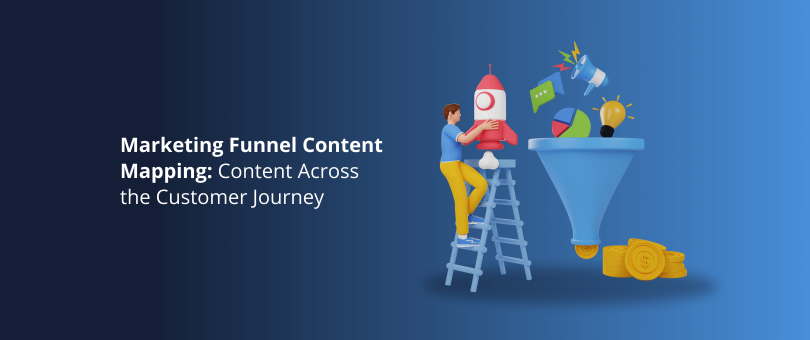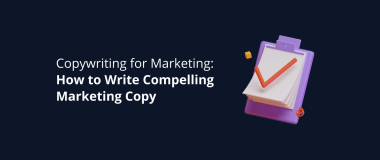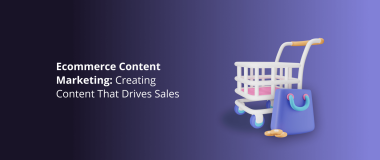Marketing funnel content mapping and content journey mapping allow businesses to provide the right type of content at every step of the customer’s journey.
Building a relationship with your customers and convincing them that what you offer is exactly what they need takes time and effort. From their first touchpoint with your business to the moment they become recurring clients, you need to prove yourself, show your expertise, and demonstrate the quality of your products and services.
However, in inbound marketing, you also need to stay subtle and focus on the client’s needs rather than trying to push forward the sale before they are ready.
By analyzing the customer’s goals at each step of the journey, you can create an efficient content funnel that guides your potential clients, educates them, and demonstrates you are their best option.
In this article, we’ll show you how to do this, and more.
Read on and take notes.
How to Facilitate Marketing Funnel Content Mapping
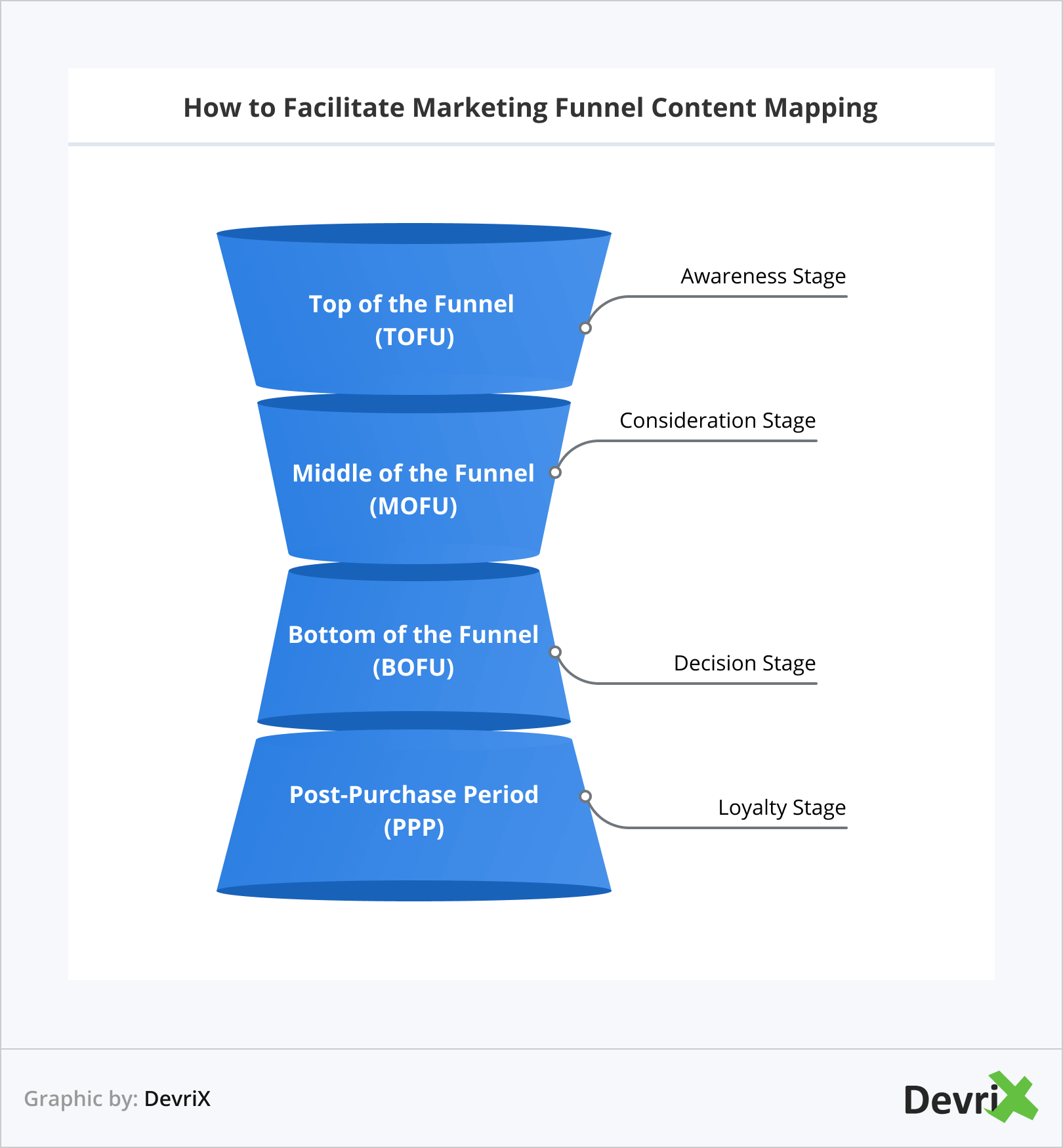
Before you delve into marketing funnel content mapping, roll your sleeves up and do some preliminary work.
The customer journey and, consequently, the content funnel of each business is unique. It depends on your industry, whether you are in B2B or B2C, the type of product, the sales cycle, the customer’s life cycle, and so on.
For your funnel mapping to be accurate, you’ll need the following:
- Buyer persona profiles. To be able to build a content funnel, first, you need to know your customers. By creating buyer personas, you can better organize your content marketing efforts and connect them to specific customer and business goals.
- Customer journey maps. Customer journey maps show you the steps in the customer journey and the touchpoints between your business and clients. You can use them to analyze the current state of your marketing funnel content map, identify potential gaps, and visualize the changes you want to make.
- Omnichannel strategy. List your communication channels and the information they are populated with. You can cross-reference them with the types of content the customer wants and needs at every stage of their journey. Based on this, you can improve performance, retire inefficient channels, and/or find new ones that will make it easier to connect with the customer.
- Customer behavior analysis. By analyzing customer behavior across the funnel, you can better understand your audience’s needs. Furthermore, you’ll see the content interactions that attract the customer’s interest, and what drives them away. As a result, you can come up with new types of content to better engage your clients.
- Attribution modeling. Playing around with different attribution models can show you which touchpoints on the customer journey contribute to conversions. This will help you map out content combinations that result in sales. As a result, you will be able to increase the overall ROI of your content efforts.
Content Journey Mapping
The next step is to delve into the actual content journey mapping.
As mentioned, the funnel of each business is unique, therefore the following is just a guideline. Don’t be alarmed if your content map, customer journey, or funnel don’t match ours, and feel free to readjust the model based on the data you’ve collected in the previous stage.
Remember, the ultimate goal is to understand what your customer cares about at every step of their journey and map your funnel accordingly. This way, at each stage they will find the type of content that not only provides the necessary information but gently nudges them towards the next step.

Top of the Funnel (TOFU): Awareness Stage
The top of the funnel corresponds to the awareness stage of the customer journey.
Right at the start, every potential customer is a stranger who hasn’t heard of your business yet. They have a pain point and may or may not have registered the need for a solution.
In short, what your content should be saying at this stage is:
“Hey, do you have a problem? Do you know that there are various ways to solve it? Here’s how!”
Content Mapping for TOFU
Your goal here is to create content that helps customers identify a need and show them that there’s a way to fix their pain points. However, at this point, make sure that you are only educating them and helping them out without imposing on them your product or service.
All in all, at the awareness stage, you are making an introduction, showing that you are a good sport, and using your content to put your business on the customer’s radar.
The types of content that best match the awareness stage of the journey are:
- Blog posts
- How-to guides
- Social media posts
- Infographics
- Podcasts
- Videos
- Landing pages
- eBooks
- Checklists
All of these formats allow you to show your expertise and make an impression on the customer.
However, keep in mind that at the top of the funnel you cast a wide net. This means that not all of the leads you attract will be of the highest quality and, as a result, some of them will drop off in the next stages of the funnel.
Nevertheless, to reduce inefficiency and avoid wasting time and effort, stick to your overall field of expertise (i.e. your niche).
All in all, your ultimate goal is to attract the attention of your customers, bring them to your website, establish yourself as a thought leader or at least an expert, and show that you know your stuff.
Communication Channels for TOFU
When funnel mapping content for the awareness stage of the journey, do your best to develop an omnichannel approach. Your preliminary research will show where your potential customers hang out and what types of content they consume.
The most efficient communication channels for this stage are:
- Organic search (SEO)
- Social media marketing
- Email marketing
- PPC ads
- Influencer marketing
Again, your goal is to cast a wide net, so make sure to cover as many relevant channels as possible. This way, potential customers will not only hear about you but are more likely to remember your name and look further into your content.
Measuring Content Success at TOFU
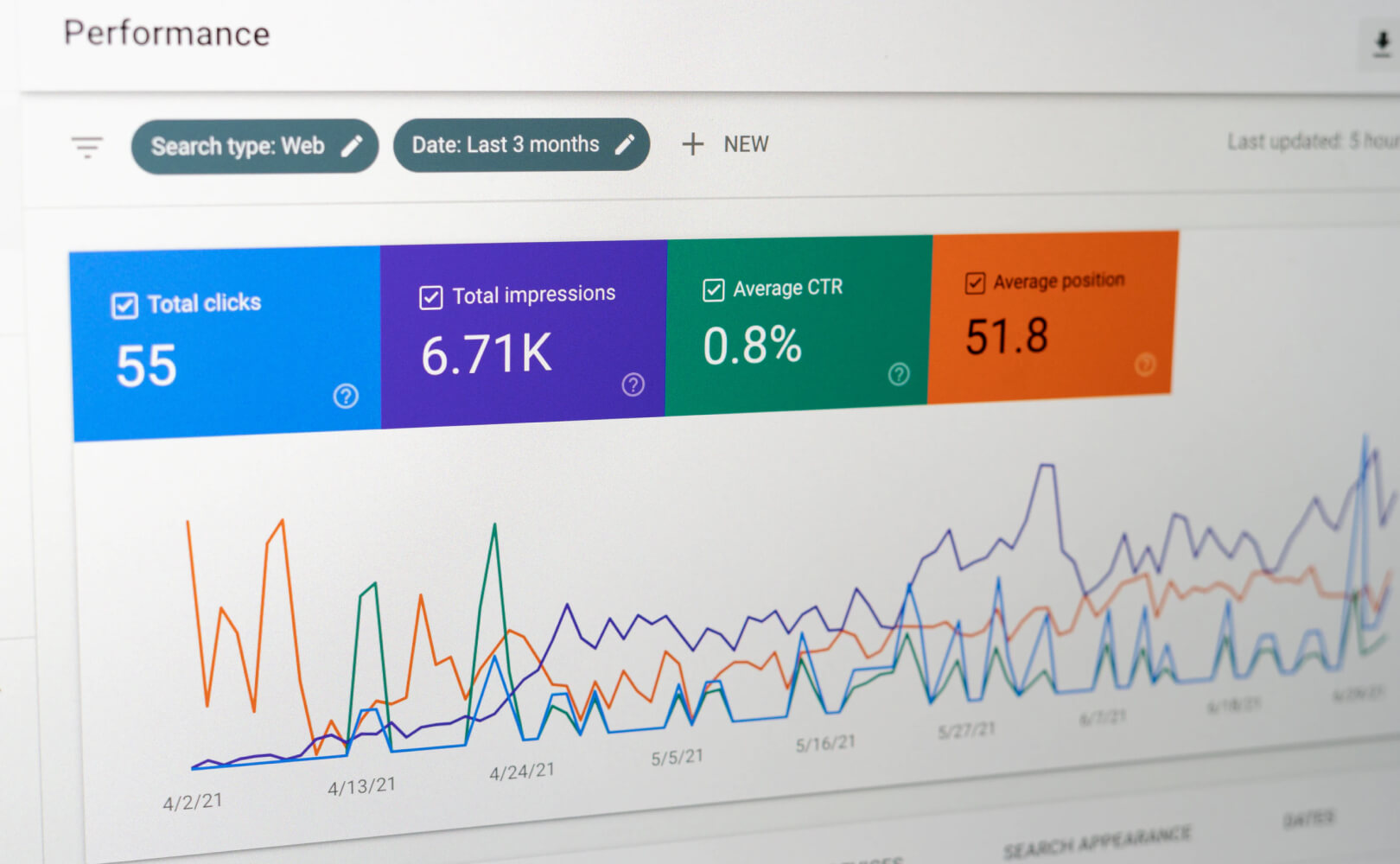
As what you aim to do with top-of-the-funnel content is to raise awareness for your brand, and grab the attention of customers, the success of your content is measured mainly by how many and how well people interact with your content.
Some of the things to keep track of are:
- Page visits
- Time on page
- Page exit rate
- Newsletter subscriptions
- Engagement (comments, likes, shares, button clicks, etc.)
- Opt-ins
These will show you what pieces of content engage and retain the attention of potential customers the most.
Middle of the Funnel (MOFU): Consideration Stage
As potential customers move down the pipeline, those that are not a good fit are usually sifted out. This means that your audience at the middle of the funnel consists of people who are much more likely to be interested in what you have to offer.
In short, what your content should be saying at this stage is:
“What if I told you that our product can help you solve your problem faster, easier, and without any fuss? That’d be awesome, right?”
Content Mapping for MOFU
The customer knows that they have some sort of problem and is relieved that there are ways to fix it.
However, there’s a fair chance that at this stage of their journey, they’ve also discovered multiple other brands that have caught their eye. Now, they are most likely researching them (and you) to find which products and services will suit them best – that’s why it’s called the consideration stage of the journey.
Simply put, your goal here is to highlight your product or service as a viable solution to consider, and show them how it is better than the rest.
Nevertheless, you should strive to show how the customer can benefit, instead of focusing on how great the product is.
The types of content that best match the consideration stage of the journey are:
- Email marketing
- Webinars
- Whitepapers
- Case studies
- How-to guides
- Microsites
- Product comparison
As you can see, some of the content types here are the same as in the previous step. However, their focus is different.
For example, a how-to guide in the awareness stage will explain the problem the customer may be facing, and tell them how to fix it themselves. A similar guide in the consideration stage will show them that with your help, they can do the same and with flying colors.
Communication Channels for MOFU

The communication here needs to be a bit more personal because your goal is to nurture potential clients and strengthen your relationship with them.
Personalization is key because it will allow you to stand out from the competition, and relate with the customer on a different level.
To that end, you need to engage their attention and help them understand why your product is the best solution.
The most efficient communication channels here are:
- Email marketing
- Social media marketing
- Organic search (SEO)
When mapping your content for this part of the funnel, remember that communication becomes a two-way street, so make sure that you reply to messages and comments, and keep up the engagement. This will boost the performance of your content even further.
Measuring Content Success at MOFU
Since building a connection is your main goal here, the best indicators of success are whether the audience actively engages with your content and/or becomes qualified leads.
This shows that, for the customer, you are not just another brand in the digital ocean, but someone that they consider as a potential business partner.
Some of the things to keep track of are:
- Number of leads
- Conversions
- Email engagement
- Email response rates
Bottom of the Funnel (BOFU): Decision Stage
The bottom of the funnel is where the magic happens. The customer has their ducks in a row, and all they have to do is make a choice.
In short, what your content should be saying at this stage is:
“Don’t take our word for it – test the product and see how it works for you. Or give us a call, we have ideas tailored to your needs.”
Content Mapping for BOFU
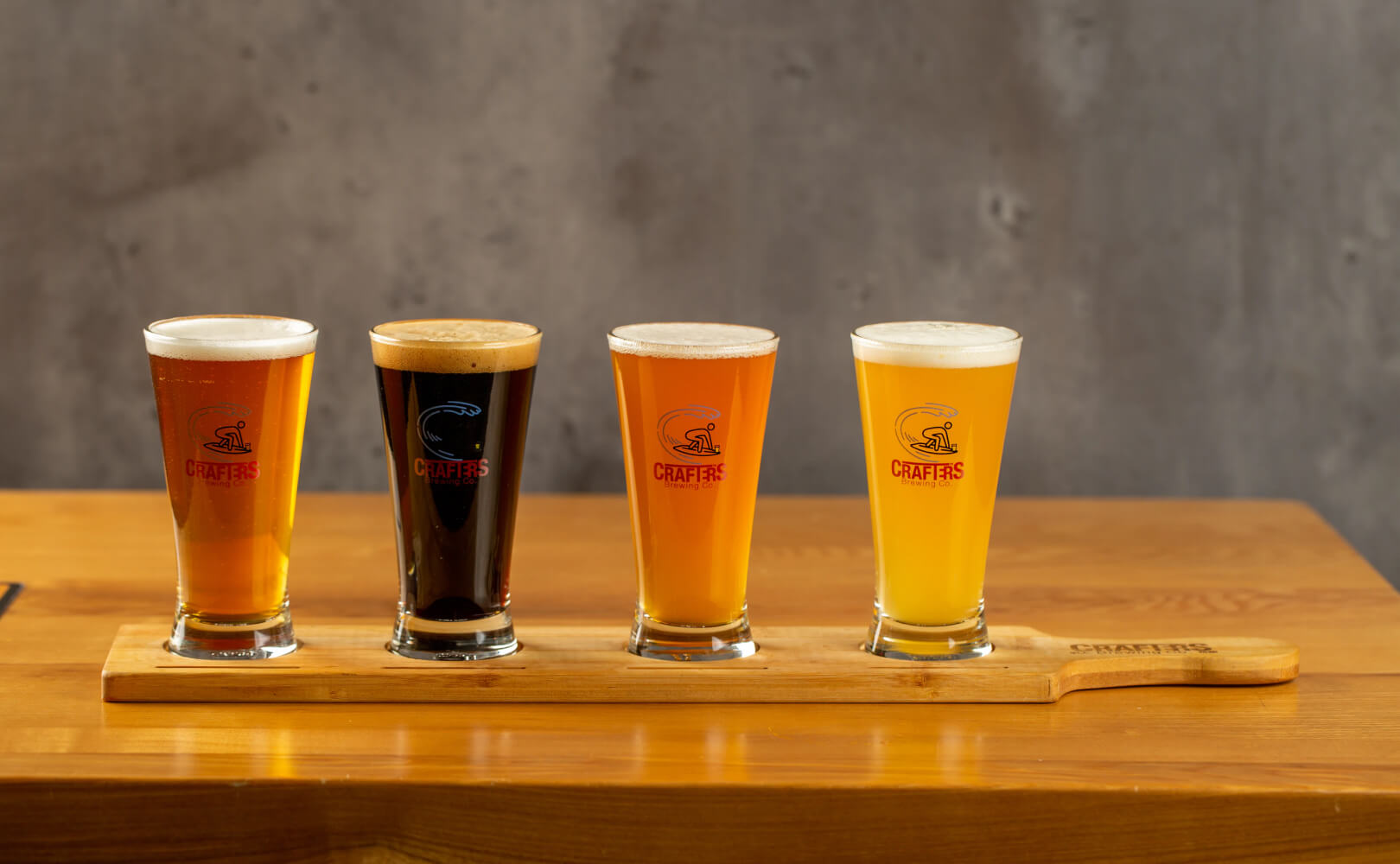
This is the end of the line and your last chance to seal the deal, so you must be very careful with the content you offer. That’s why this stage is usually in the hands of the sales reps who contact the prospects and try to understand what type of content will best convince them to buy.
The goal is to understand the individual needs of the customer, their concerns, what prevents them from making a purchase, and what will reassure them so that you can act accordingly.
The types of content that best match this stage of the journey are:
- Product overviews
- Customer reviews
- Customer success stories
- Special offers
- Demos
- Free trials/samples
- Free consultations
As you can see, these content formats show the value of your product, provide a hands-on approach, offer peer recommendations, or push the sale forward.
Communication Channels for BOFU
At this point, nothing beats personal communication.
Depending on the customer’s preferred channels, you can send them information or make it easily available on your website and guide them via internal links and content suggestions.
The most efficient communication channels for this stage are:
- Emails
- Personal communication
- Review platforms
Measuring Content Success at BOFU
Since this is the bottom of the funnel and the place where the sales are supposed to take place, the best way to measure whether your content mapping was successful is to check how many opportunities become customers.
Some of the things to keep track of are:
- Requested demos
- Successful deals
Post-Purchase Period (PPP): Loyalty Stage

More often than not, marketers believe that the customer journey ends at the bottom of the funnel with a closed deal.
However, the post-purchase stage is probably the most important part of the client’s experience and a determining factor in the future success of your relationship.
This is where you build loyalty.
In short, what your content should be saying at this stage is:
“Do you need help? Here’s how to use our product. Also, let us know how you like it and what we could do to improve things! We’d also love it if you told your friends and family about us.”
Content Mapping for PPP
Content at this point of the journey should teach the customer how to use the product in order to benefit from it the most.
The goal is to retain the client, prevent them from churning, and obtain their feedback.
The types of content that best match this stage of the journey are:
- Onboarding materials
- How-to guides
- Tutorials
- Manuals
- Surveys
- Feedback sessions
- Loyalty programs
If you are struggling to come up with ideas for content for the post-purchase period, consult with your customer support team. They will tell you where clients encounter difficulties and what troubles them.
You can prepare content that addresses these issues and distribute it to new customers as a preemptive measure and reduce onboarding stress.
This will make it less likely that customers leave your brand because they don’t understand how to use the product.
Communication Channels for PPP
Personal communication is the best way to ensure the success of your content at this stage. Of course, the necessary information should be easily available on your website. The client needs to feel that they can contact you at any time to request further assistance and/or content.
The most efficient communication channels for this stage are:
- Emails
- Personal communication
- Customer support
- FAQ pages
- Knowledge bases
Measuring Content Success at PPP
The best way to measure the success of your content at this stage of the customer journey is to count your happy clients. If people are staying with your brand, returning to make more purchases, and recommending you to their peers, this means that you are doing a great job.
If their behavior shows that they are struggling with the product, leaving negative reviews, or that they are unhappy with your customer service, you need to take urgent measures.
Some of the things to keep track of are:
- Positive reviews
- Feedback
- Word-of-mouth and referrals
- Returning customers
- Churn rate
Bottom Line
Marketing funnel content mapping is the foundation of a successful content marketing strategy.
If you want potential customers to move smoothly down the funnel, fall in love with your product, and become loyal clients, you need to nurture them with the right content at the right time.
This way, you can know them and their needs better, show them that you’re a competent expert, and build a strong relationship.
That’s the beauty of inbound marketing – it makes all this possible. All you need to do is create top-quality content and strategically position it along the customer journey.
